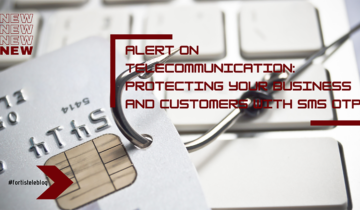To achieve success in the OTT game, you need just the right mix of attractive content, appealing user experience, and spot-on personalizations. This alchemy requires a seamless integration of technology, data and analytics, helping you keep an eye on your views, plays, unique users, playback time and engagement metrics.
A successful OTT platform is one that always shows the right content to the right audience at the right time, increasing the chances of them liking it and extending their subscriptions and recommending the service to friends – effectively driving your business.
Naturally, you can only improve those metrics which you can track. With OTT analytics in place, you can do just that: keep an eye on specific metrics and make adjustments to improve the performance of your platform and optimize your monetization efforts.
In this article, we present an overview of today’s OTT analytics, and the role and importance of specific metrics.
What are the most popular metrics in OTT analytics and what do they tell you?
There are many analytics tools on the market allowing you to keep track of your video streaming business, and Google Analytics is perhaps one of the most popular tools. But every platform is a little different, every audience is different, and viewing habits will vary accordingly. You may need a custom analytics tool to better understand how your users are engaging with your content. With such insights you can learn what content to make more of, how to organize your channel in terms of user experience, and what content to promote to gain more subscribers.
Some of the most interesting KPIs in OTT analytics include:
What subscribers like to watch
This metric lets you track how many people are watching specific content, and for how long on average. It gives you an estimate of how engaging specific content is, allowing you to identify the top performing content and promote it more.
When and how often subscribers like to watch
See how often subscribers are watching your content, and how the usage is changing over time. Hours streamed per viewer is also a good indicator of whether you are releasing content frequently enough.
How subscribers access the content
This metric allows you to keep track of how much time your subscribers spend watching your content across the different streaming platforms. Knowing where your audience prefers to watch your content (like Roku, iOS, Apple TV, Android, etc.) helps you to prioritize your development and, for example, invest more time and attention in specific apps, polishing your UI and design.
Unique users
Unique users is a metric which tells you the actual number of individual people who accessed and consumed a specific OTT broadcast. It is typically measured based on browser cookies.
Playback time
This is the number of minutes or seconds that users spent consuming your live content – before switching to another channel of type of content. This metric basically tells you if your content is actually interesting for the audience you’re trying to reach. The longer the playback time, the more interested the audience is.
Engagement
Engagement measures how many users interact with your content. This metric could refer to sharing the content on social media, bringing in more inbound traffic to your channel. This type of metric is also very telltale in terms of what users like.
Customer count
This metric allows you to see how your subscription base is growing over time.
Subscription churn
This metric is the percentage of subscribers that have canceled in the past 30 days.
Trial to subscription conversion ratio
This tells what percentage of the trials convert into paid subscribers. This can be influenced by your current content offering or the subscription fee (perhaps it’s time for a promotion).
Peak of concurrency
The peak of concurrency is the moment of the transmission which registers the most plays. It could be an interesting part of the film or a fan-favorite scene. It can be used to identify the cliffhanger moments and, possibly, to use the data to inject ads at just the right time.
Which metrics to focus on?
As you can see, there are many useful OTT metrics. Choosing and focusing on the relevant metrics would typically depend on your specific use case, and what you’re trying to achieve. The numbers are the key, but knowing how to make sense of the data and convert it into actionable insights is even more important. Goon analytics platforms offer AI-driven recommendations on how to fix specific issues.
Why OTT analytics matter?
Big Data is, in fact, not just about the data but about what you make of it. In other words, it’s about the analytics. How you use your viewership data in OTT can make or break the service. No OTT platform would succeed without a decent recommendation engine and personalized content, and Netflix often comes to mind as the prime example of how to do it well.
The one thing to remember is it’s your data. Use it in the ways that are most useful for you and your business. Adopting and harnessing modern AI technologies can have a significant impact on your bottom line.
Spot-on recommendations make for just part of the uses of data in OTT. Good analytics allow you to:
- Better understand your users. What is the next best offer for the audience? What is the next best action they could do? What do they abandon? Knowing this will help you retain your users and reduce churn. However, this requires tracking user behavior and processing data across various sources and connected devices.
- Improve the lifetime value of each user (aka gross customer lifetime value or LTV). Once your users realize there is not much value in your service, they may churn. The LTV value can be calculated automatically based on your gross revenue per user and historical churn rate.
- Enhance user experience. By crunching the data, you can, for example, make the platform look a little more to the user’s liking. For example, you can show the right miniatures at the right time. With an enhanced user experience, you can
- Target ads based on user preferences: How many ads is too much? How to make the ads more personalized? Which ads make the viewer convert the most?
- Retain and grow subscriber base. By knowing what your viewers watch and when they churn. By analyzing their viewing data and showing them more relevant content, you might be able to make users stay with you for longer. Additionally, you can use the precious analytics to implement some cross-selling or upselling opportunities, thus making more accurate predictions for the next best offers or actions.
- Micro-segment the audience to offer personalized programs.
- How do I effectively market the OTT App? Identify which of your marketing efforts bring returns, and focus on them.
- Identify the regions which drive the most engagement for the content.
- Which App Stores, platforms and providers offer the best ROI for the App?



